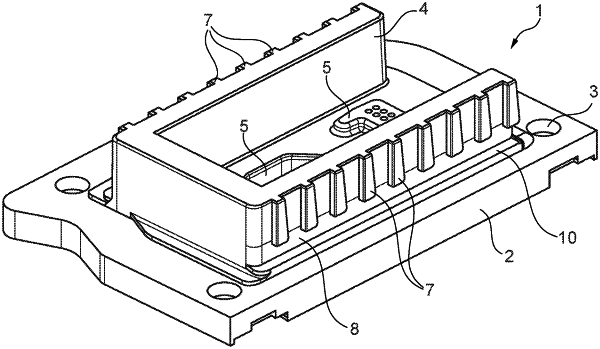| CPC A61M 5/1413 (2013.01) [A61M 5/1408 (2013.01)] | 19 Claims |

|
1. A modular arrangement system for arranging at least one medical device, the modular arrangement system comprising at least a first arrangement module and a second arrangement module, the first arrangement module and the second arrangement module configured to be mechanically connected to one another, wherein:
both the first arrangement module and the second arrangement module have: a first housing part on which a first coupling structure is provided on at least two diametrically opposed sides, and a second housing part;
wherein the second housing part of the second arrangement module is adapted to be mounted on, below or laterally to the first housing part of the first arrangement module, and at least one of the second housing part of the first arrangement module and the first housing part of the second arrangement module is configured to be coupled to a third arrangement module
wherein:
the modular arrangement system comprises a bar rotatably or slidably supported in the second housing part of the second arrangement module for locking the first housing part of the first arrangement module with the second housing part of the second arrangement module,
the first coupling structure comprises a raster of first protrusions,
the bar comprises a second coupling structure having a complementary raster of second protrusions adapted to engage with the first protrusions in an undercutting manner, and
the bar is designed in such a way that, by a singular actuation, the bar engages with the first coupling structure on at least two diametrically opposite sides of the first housing part of the first arrangement module.
|